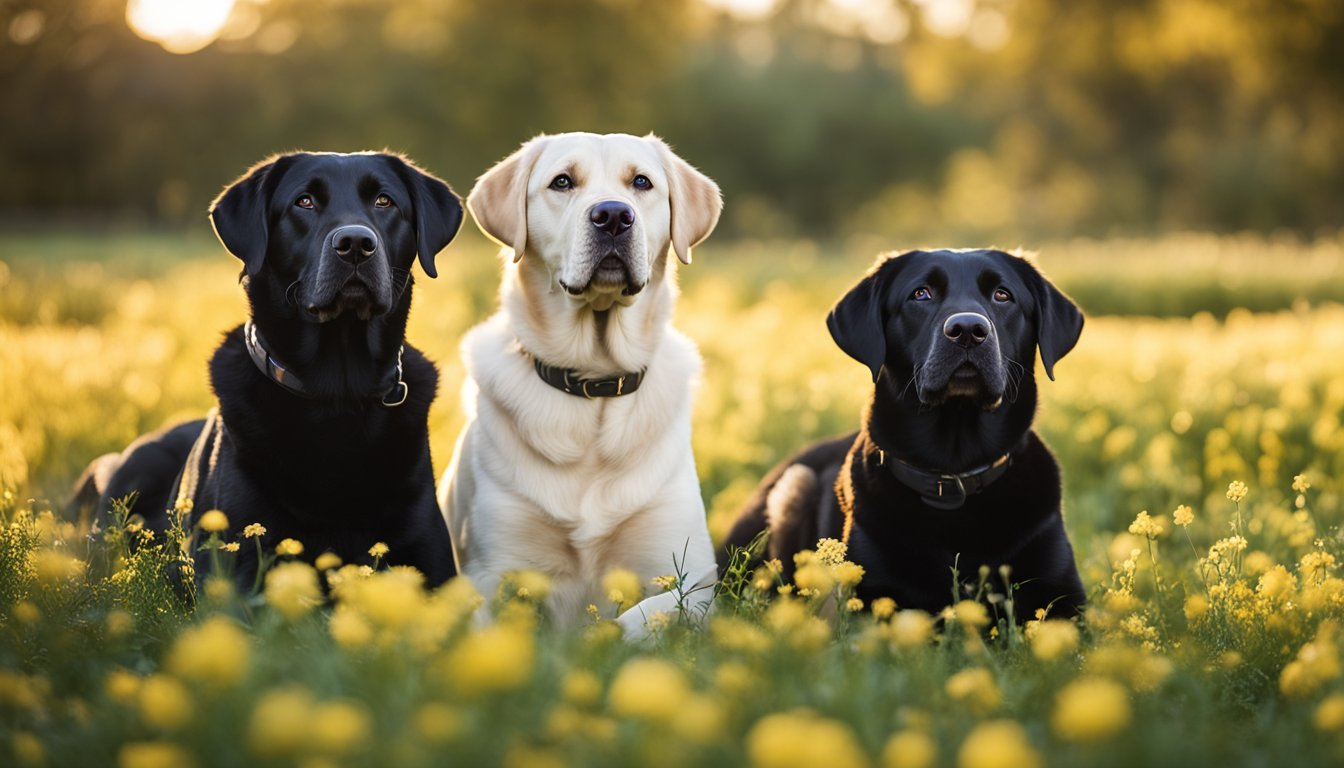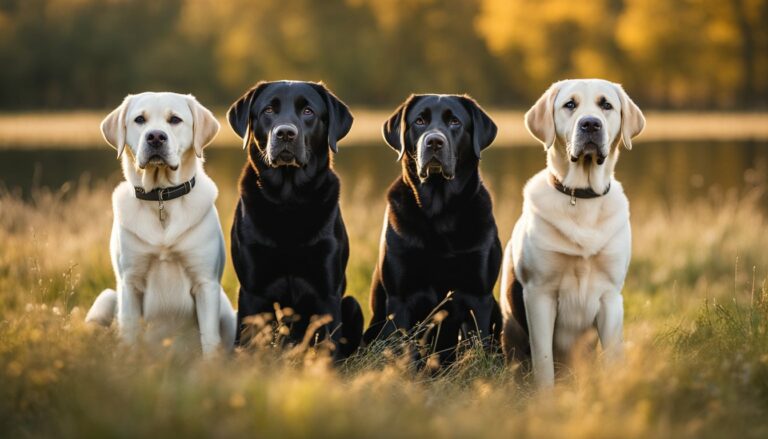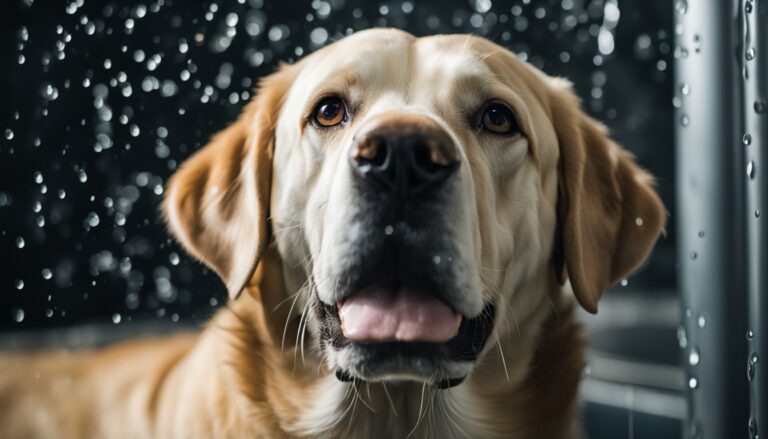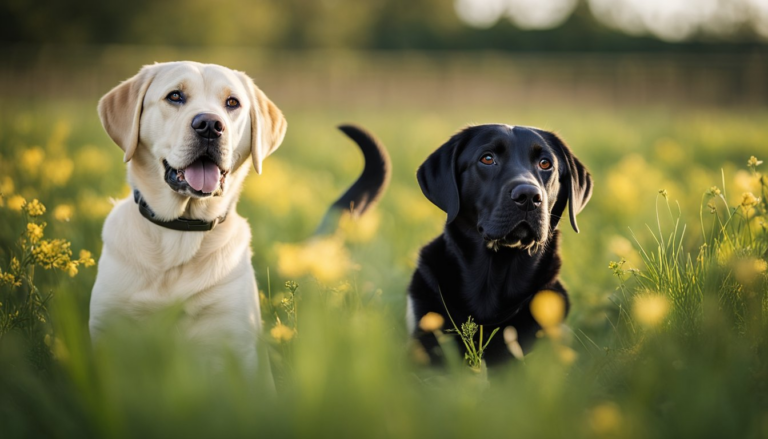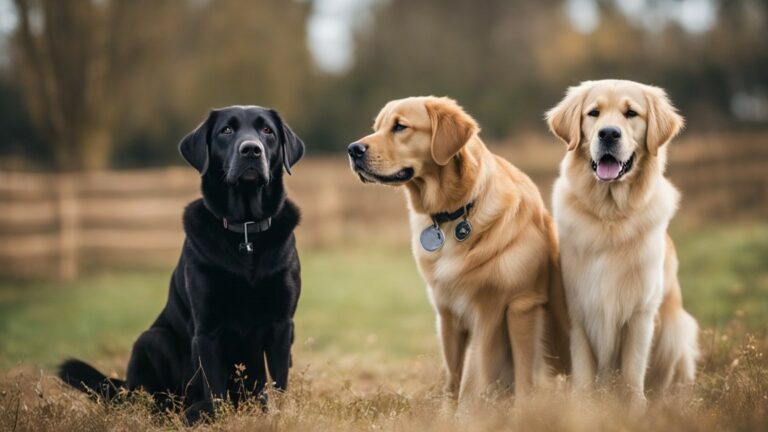What Kind of Coat Does a Labrador Retriever Have? Understanding Your Lab’s Unique Fur
Are you here because you are wondering what kind of coat a Labrador Retriever has?
In this article, we will delve into the different aspects of a Labrador Retriever’s coat, including its unique characteristics, shedding patterns, and grooming requirements. We will also explore the impact of genetics on coat color and discuss the rare and non-standard colors that some Labs can have.
By the end of this article, you will have a comprehensive understanding of your Labrador Retriever’s coat and how to properly care for it.
Whether you are a new Lab owner or have had Labs for years, this knowledge will improve your ability to maintain a healthy and beautiful coat for your furry companion.
Labrador Coat Types and Characteristics
| Aspect | Description | Importance |
| Double Coat | Soft and dense undercoat with a coarser guard coat. | Provides insulation, water resistance, and protection from environmental elements. |
| Puppy vs. Adult Coat | Soft and fluffy coat in puppies transitions to adult double coat by 6 months. | Understanding the transition helps in proper grooming and care. |
| Weather Resistance | Excellent adaptation for weather resistance. | Keeps Labs warm during cold weather and cool during hot weather; provides water resistance. |
Double Coat Explanation
Labrador Retrievers have a distinct double coat, which consists of two layers: a soft and dense undercoat and a coarser guard coat. This double coat serves multiple purposes, such as insulation, water resistance, and protection from environmental elements.
Puppy vs. Adult Coat
When Lab puppies are born, they have a soft and fluffy coat that gradually transitions to the adult double coat as they grow. By around six months, the soft puppy coat will have mostly been replaced by the adult coat, comprising the guard coat and undercoat.
Weather Resistance of the Coat
The double coat of Labs is an excellent adaptation for weather resistance. The undercoat helps maintain their body temperature, keeping them warm during cold weather and relatively cool during hot weather. The top coat, or guard coat, contains natural oils that provide water resistance, enabling Labs to swim comfortably and dry off quickly.
This adaptation is especially significant when considering the thermal status of Labrador Retrievers based on their coat color.
Impact of Genetics on Coat Type
Labrador Retrievers come in three primary coat colors: black, yellow, and chocolate. These colors are genetically determined, and variations within these shades depend on the specific genes inherited from the parents.
All Labrador Retrievers, regardless of color, have the double coat, leading to similar shedding patterns and grooming requirements. The dense undercoat of Labs contributes to their regular shedding, which can be managed with regular grooming sessions to remove loose hair and distribute the natural oils for a healthy and shiny coat.
Coat Colors
Standard Colors
Labrador Retrievers are primarily known for their three standard coat colors:
| Coat Color | Description | Genetic Basis |
| Black | Solid black coat. | Dominant E gene. |
| Yellow | Ranges from light cream to fox red. | Recessive e gene, preventing the expression of eumelanin. |
| Chocolate | Rich brown, sometimes almost dark red. | Recessive e gene and two copies of the recessive b gene. |
| Rare Colors | Silver, White, Champagne, Fox Red. | Result of various genetic factors, including dilution genes and variations in standard colors. |
These coat colors are widely accepted by breed standards and are commonly observed in Labradors.
Color Genetics
The coat colors of Labrador Retrievers are influenced by the E gene and B genes.
The E gene determines the presence of eumelanin, which produces black and chocolate colors.
A black Lab possesses the dominant E gene, while a chocolate Lab has the recessive e gene. Yellow Labradors have the recessive e gene, preventing the expression of eumelanin and resulting in their yellow coat color.
The B genes are responsible for producing the chocolate color in Labradors.
Chocolate Labradors inherit two copies of the recessive b gene, while black and yellow Labradors have one or two copies of the dominant B gene.
The interplay of these genes determines the final coat color of a Labrador Retriever.
Rare and Non-Standard Colors
Some Labrador Retrievers have rare or non-standard coat colors, such as silver, white, champagne, and fox red labs.
- Silver Labradors are a result of a recessive gene that dilutes the chocolate color, giving the fur a silvery appearance.
- White Labradors have an almost completely white coat, but they are typically considered as a variation of the yellow Labrador.
- Champagne Labradors have a lighter, diluted yellow coat due to the presence of a dilution gene.
- Fox red Labradors are a darker shade of yellow, with a rich, deep red hue. While this color is not as common as the standard yellow, black, and chocolate coats, fox red labs are still accepted within breed standards.
Labrador Retrievers exhibit a variety of coat colors due to their unique genetic makeup. The standard black, yellow, and chocolate coats are widely recognized, with rarer and non-standard colors adding diversity to the breed’s appearance.
Coat Care and Grooming
Regular Grooming Needs
Labrador Retrievers have a double coat, which consists of a soft, dense undercoat and a short, straight, outer coat. This double coat protects them from harsh weather conditions and helps maintain their natural oils.
Regular grooming is essential for the health and appearance of your Lab’s coat. Ideally, Labs should be brushed at least once a week to remove loose hair and distribute their natural oils evenly across their skin and hair.
Recommended Grooming Products
When grooming your Labrador Retriever, it’s important to use the right tools and products. A slicker brush is a good choice for removing loose hair from the undercoat, while a bristle brush is suitable for the outer coat.
For bathing a lab, use a mild shampoo formulated for dogs to avoid causing skin irritation. Remember to only bathe your Lab when necessary, as bathing too frequently can strip away their natural oils.
Addressing Shedding
Labrador Retrievers are known to shed, so it’s essential to address this issue as part of their regular grooming routine. Regular brushing helps minimize shedding by removing loose hair from their double coat. Investing in a deshedding tool can also be helpful in reducing shedding, especially during seasonal changes when Labs tend to lose more hair.
Maintaining a healthy diet and hydration can also support coat health and reduce excessive shedding. Proper coat care and grooming for Labrador Retrievers involve regular brushing, using appropriate grooming tools and products, and addressing shedding issues.
By maintaining a consistent grooming routine, you can help keep your Lab’s coat healthy, clean, and looking its best.
Diet and Nutrition
Impact of Diet on Coat Health
A Labrador retriever’s coat health is influenced by their diet. Proper nutrition is vital for maintaining a healthy, shiny, and waterproof coat. Ensuring Labs receive the right balance of nutrients can alleviate skin issues, shedding, and dull fur. It’s important to choose a diet that meets the specific requirements of Labrador retrievers, as outlined in our article on “What should labradors eat?”.
Recommended Foods for a Healthy Coat
To promote a healthy coat in Labrador retrievers, it is important to include essential fatty acids such as Omega-3 and Omega-6 in their diet. These fatty acids help maintain a shiny coat while providing anti-inflammatory benefits. Foods rich in these nutrients include fish, flaxseeds, and high-quality dog food with added fatty acids. Additionally, vitamins and minerals like biotin, zinc, and vitamin E are vital for maintaining a well-nourished coat.
Incorporating a high-quality dog food designed for Labrador retrievers will provide a wholesome diet tailored to their specific needs. Pre-formulated dog food options recommended in our best food for labs review ensure Labs receive the necessary nutrients for both coat and overall health.
Importance of Balanced Nutrition
Besides coat health, a balanced diet is important for maintaining the overall health and well-being of Labrador retrievers. A nutritious diet supports bone and joint health, lean muscle mass, cognitive function, and a robust immune system.
Providing Labs with a diet rich in proteins, fats, carbohydrates, vitamins, and minerals will ensure they remain active and healthy throughout their lives. Make sure to consult with a veterinarian for guidance when selecting the appropriate food for your Labrador retriever to guarantee optimal health and coat condition.
Health Considerations
Common Skin and Coat Conditions in Labradors
Labrador Retrievers have a unique coat consisting of two layers: a short, dense undercoat for insulation, and longer, water-resistant guard hairs. Despite their robust coats, they can face various skin and coat concerns.
Common health problems in Labs include:
- Allergies, leading to itchy, inflamed skin, and hot spots, which are painful, infected skin patches.
- Parasites, such as ticks and fleas, can cause further irritation and even transmit infections.
- Labrador Retrievers, like any other breed, may also develop lumps or growths on their skin, requiring veterinary attention.
Importance of Veterinary Check-ups
Regular veterinary check-ups are crucial for maintaining your Labrador’s coat health and addressing any skin issues promptly. Your veterinarian can assess your Lab’s skin condition, evaluate their overall health, and recommend appropriate treatments or preventive measures. Early intervention is vital, especially for more severe or chronic skin problems, minimizing complications and ensuring your Labrador’s comfort.
Signs of a Healthy Coat
A healthy Labrador coat is generally dense, shiny, and lies smoothly against their body. Although Labs are not hypoallergenic, a well-maintained coat can help minimize shedding and dander. Here are indicators of a healthy coat:
- Evenly distributed fur with no bald patches
- Shiny, smooth, and clean hair
- Absence of unusual lumps or bumps
- No foul odor or excessive scratching
Keep an eye on your Labrador’s coat and skin, and consult your veterinarian if you notice any changes or issues. With proper care, attention, and regular veterinary check-ups, you can help maintain your Labrador Retriever’s coat health and overall well-being.
Comparison with Other Breeds
Similar Breeds and Their Coats
Labrador Retrievers, often called Labs, are known for their friendly and outgoing personalities. They share many characteristics with other retriever breeds such as Golden Retrievers and Curly-Coated Retrievers.
All three breeds have medium-to-large builds, versatile skill sets, and a strong drive to please. Their coats, however, differ significantly.
Golden Retrievers have a dense, water-repellent double coat. The outer coat is long, wavy, and feathered, while the undercoat is thick and insulates them against harsh weather.
Curly-Coated Retrievers have a unique tight, firm, and water-resistant coat formed by small, tight curls that cover the entire body except for the face and front legs.
Distinctive Features of the Labrador Coat
The Labrador Retriever’s coat is double-layered and weather-resistant, which is essential for their original roles as working and hunting companions.
The outer layer is short, straight, and dense, while the undercoat is soft and thick to provide insulation. This combination keeps them warm and dry in various weather conditions. Labs shed their coats seasonally and require regular grooming to stay healthy and comfortable.
Labrador Retrievers can have different coat colors: black, chocolate, or yellow. These color variations are part of their genetic makeup and can be either uniform or mixed within litters. The shade of the coat has no bearing on their working abilities or temperament.
While their coat isn’t as long or wavy as Golden Retrievers, Labs still need regular grooming to maintain their coat’s health and manage shedding, particularly during the seasonal changes.
Frequently Asked Questions
Does a Labrador Retriever have a waterproof coat?
Yes, Labrador Retrievers have a waterproof coat. Their double coat consists of a soft, dense undercoat and a short, straight outer coat that effectively repels water. This coat helps keep them warm and dry when swimming or working in wet environments.
Is a Labrador’s coat short or medium?
A Labrador’s coat is relatively short and thick. Although it may not be as long as a medium-length coat, the double-layered structure with a dense undercoat and a straight, protective outer coat ensures the Labrador stays warm and insulated.
Do all Labradors have double coats?
Yes, all Labrador Retrievers are known for having a double coat. A double coat is a distinctive feature of the breed, helping them to adapt to challenging weather conditions, especially in water-related activities, such as swimming and retrieving.
Can a Labrador Retriever have a wavy coat?
Although a Labrador Retriever’s coat is typically straight, some Labradors may have a slightly wavy coat. Nonetheless, the wavy coat should not be too long or excessively curly. It still consists of a double coat with a soft undercoat and a protective outer coat.
How does a Labrador’s coat compare to a Golden Retriever’s?
Both Labrador Retrievers and Golden Retrievers have double coats that are designed to withstand harsh weather conditions. However, there are some differences between the two.
Labrador Retrievers have a shorter, denser, and straighter coat, while Golden Retrievers have a medium-length coat with a natural wave or feathering on the chest, back of legs, and tails.
Despite these differences, both breeds are equipped with coats that efficiently repel water, provide insulation, and protect them from environmental elements.

